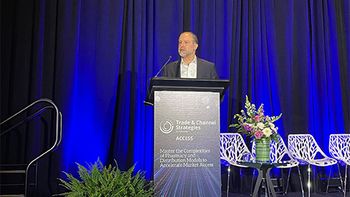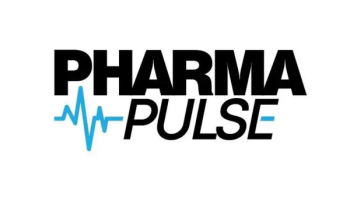
Using Data Loggers and Cold Chain Tech to Power Precision Pharma Delivery
In the second part of her Pharma Commerce video interview, Heather Zenk, Cencora’s president of US supply chain, explores how public-private collaboration, smarter sourcing strategies, and long-term manufacturer support are helping to fortify pharmaceutical supply chains against future crises.
In a video interview with Pharma Commerce, Heather Zenk, Cencora’s president of US supply chain, describes how today's distribution networks must seamlessly connect manufacturers to care sites that range from large academic centers to rural pharmacies and physician offices. This “last mile” delivery is essential because, as Zenk notes, “all healthcare is local.” Patients want access to advanced therapies close to home, and distributors play a critical role in making that happen.
A major focus in this effort is maintaining product integrity, especially for cold chain items that must be stored between 2–8°C. Innovations in cold chain management now go beyond temperature tracking; they include predictive maintenance of infrastructure such as freezers and compressors. Distributors not only monitor product temperature but also evaluate the performance and potential failure risks of the equipment that manages the cold chain environment.
Zenk emphasizes the importance of marrying manufacturer data with real-time logistics. For example, if a care site accidentally stores a cold chain product outside the optimal range for a short period, data from the manufacturer can often confirm whether the product remains viable. This responsiveness supports safe patient care and reduces waste.
Another important innovation is the use of reusable cold chain totes, which service over 90% of the US market. These require robust freezing systems and operational oversight to ensure readiness and reliability. Zenk underscores that preventing failure, rather than simply reacting to it, is the next frontier in pharmaceutical distribution. By using data-driven insights and predictive engineering, the distribution process becomes more resilient, ensuring that patients can access vital therapies without delay or compromise.
She also comments on the advanced technologies that are proving most effective in enhancing real-time visibility and operational efficiency; strategies organizations should prioritize to ensure compliance while minimizing disruptions for manufacturers and providers as the DSCSA compliance date approaches; lessons learned from recent drug shortages and global disruptions; the practical steps that can be taken in transportation, packaging, and warehousing to meet sustainability goals without compromising reliability or cost-effectiveness; and much more.
A transcript of her conversation with PC can be found below.
PC: What advanced technology or data-driven solutions are proving most effective in enhancing real-time visibility and operational efficiency?
Zenk: You can use binary data loggers, which might be in a, I'm moving a large quantity, a large quantity from point A to point B. Maybe I'm moving something warehouse to warehouse, so you can have a binary tracker. We use tools like Sensitech. We use data feeds—loggers that are feeding a system so that we can look at from end to end. We also are really tracking with third parties when we're using next-day air freight.
When I'm putting a very sensitive, high-dollar specialty pharmaceutical for an oncolytic or for a retinologist into the airspace, tracking that packaging in near real time with our third party also really matters. We know when it's in the air, when it gets to a hub, when it gets sorted, when it gets on a truck, and that entity in instance, really, the value that Cencora brings, is we're doing all of that in a 12- to 14-hour period of time. From the moment that I'm putting it into a cold chain pack out inside a cold chain refrigerated asset to track that package, all the way through to the site of care getting it, is under an 18-hour window to 24-hour window.
We know our cold chain materials have been qualified, certified, and we're doing all of that high quality work to know that can stay from 2-8°C up to 48 hours, up to 36 hours. We have different conditioning packages that last for different durations so we can meet the need. If I'm going to Guam, for example, we have to go to Guam. There's patients in Guam that we service. We know we need a 48-hour pack out there, so making the right cold chain asset match the service that we need is some blocking and tackling you just have to be able to do in the pharmaceutical supply chain in today's world.
Newsletter
Stay ahead in the life sciences industry with Pharmaceutical Commerce, the latest news, trends, and strategies in drug distribution, commercialization, and market access.





